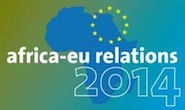The “EU’s comprehensive approach to external conflict and crisis”, launched jointly last week by the European Commission and the High Representative of the EU for Foreign Affairs and Security Policy, has been a long-awaited Communication for those following the development of the EU’s external action closely. It refers to conflict and crisis in it’s title but, in essence, goes beyond this as it aims to clarify the guiding principles for a joint EU external action across all areas, while emphasising dealing with conflict (prevention) and post-crisis recovery. The EU started discussing the need for this ...
+++ ECDPM Challenges blog series. Post number four +++ The African Peace and Security Architecture might have a strong track record, but that’s no reason for complacency Messages from the recent ‘Revitalising The Africa-EU Partnership’ conference hosted by Friedrich Ebert Stiftung and ECDPM, and the European Think Tank Group (ETTG) Conference on Africa-EU relations. Despite improved performance in peace and security matters over recent years, one of the major challenges in 2014 will be to further broaden the dialogue in peace and security beyond the more narrow security dimensions, ensuring the highest-level African-EU political engagement to ...
Yesterday’s donors’ conference on Mali organised in Brussels by the EU and France “in close coordination with Mali” pledged over 3 billion euros. It gathered several hundreds representatives from all over the Sahel region, Western Africa, and the world, but was it just another donor-recipient show? The statements made today following the conference will inevitably be equally frustrating, but will the glass be half full or half empty? An electoral renaissance? In many respects, the glass is half full because the country is said to be half way to its next presidential elections, which are ...
The EU’s “comprehensive approach” in external action policy has provoked a range of responses - but the most widespread seems to be confusion. Ask 10 people from across the EU institutions to define the comprehensive approach and chances are you’ll get 10 different answers. While the basic premise is simple enough to grasp, it’s hard to find consensus, common language or any sense that the EU is actually acting comprehensively. Current developments in Mali have made the necessity for clarity even more pressing. This blog seeks to explore the key questions needed to frame the ...
To meet the challenges that natural disasters, armed conflicts and structural forms of fragility bring to countries or entire regions, more flexibility and participation in implementing the EU policy on Linking Relief Rehabilitation and Development (LRRD) is needed. “We want to be more involved and take leadership in the LRRD process and be accompanied by our partners,” urged Mr. Amadou Alahouri, High Commissioner of Niger for the 3N Initiative (“Nigerians Nourish Nigerians”) during a public hearing on this topic at the European Parliament on 3 September 2012 in Brussels. The Parliament held this meeting at ...
Organisational charts in general can’t tell you much about what happens behind the scenes in a company or an institution. They don’t show who is in or out of favour, they don’t map influence and informal lines of communication dictating priorities. However, when looking at previous versions and updates, they help to understand how an organisation is evolving, or at least the formal thinking about how it should. Last week the EEAS published a new version of its organisational chart (dated 1st of May 2012), displaying its internal structure and stating the names of key ...
Andrew Sherriff co-authored this article. ++ SERIES: ECDPM ANALYSIS OF NEW EU DEVELOPMENT POLICY REFORM PROPOSALS ++ Fragility is notoriously and closely related to human suffering, volatile security situations and to ineffectiveness of traditional aid. The continuum of fragility – conceptualizations which characterise the relative strength or weakness of states on a continuum with state failure and collapse at one extreme and states characterized by serious vulnerabilities at the other - is high on the global political agenda. EU Foreign Ministers acknowledged that some countries are “facing increasing fragility” and committed to target their resources ...
In the various analyses of the European External Action Service (EEAS) one year on, those who view the glass “half empty” (mostly independent analysts, journalists and think tanks) seem to have the upper hand on those who view it as “half full” (the official report). Key questions for assessing the EEAS’ performance in relation to Africa are: has the EEAS helped to upgrade the political dialogue between the EU and Africa, and increased the coherence of EU policies, while also furthering development commitments? Africa as a whole, like many other regions and issues, has struggled ...
Last week, stakeholders involved in the International Dialogue on Peacebuilding and Statebuilding have presented and endorsed an agreement on a “New Deal for engagement in fragile states” at the Fourth High-Level Forum on Aid Effectiveness in Busan. Fernanda Faria analyses what’s new in the New Deal, its potential and some of the challenges to engage differently in fragile states. Fragile and conflict-affected countries are often rated among the poorest and least developed. International aid to these countries focuses on the Millennium Development Goals (MDGs) and aid effectiveness, which do not address conflict, security and justice ...
++ SERIES: ECDPM ANALYSIS OF NEW EU DEVELOPMENT POLICY REFORM PROPOSALS ++ When it comes to violent conflict, the common mantra is that prevention is better (and cheaper) than cure. This is also illustrated by the findings of a recent evaluation of support to conflict prevention and peace building. In Georgia, for instance, the contracted amounts to be spent by the European Commission increased from €19 million in 2007 before the escalation of a conflict with Russia, to €72 million in 2008, the year of the clashes, and €116 in 2009 as a result of ...

















